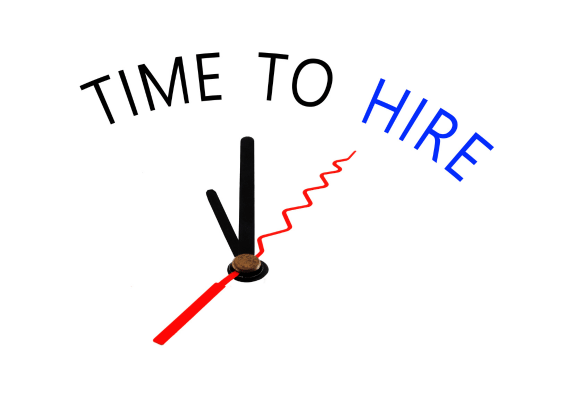Introduction
In today’s competitive business landscape, hiring the right talent is more critical than ever. Your employees are the backbone of your organization, and the quality of your team directly impacts your company’s success. However, many businesses struggle with ineffective hiring processes that lead to poor hires, high turnover rates, and wasted resources. If you’ve been facing challenges in building a strong team, it might be time to rethink your hiring process.
In this blog, we’ll explore the key signs that indicate your hiring process needs an overhaul. We’ll also provide actionable tips to help you streamline your recruitment strategy and attract top talent.

High Employee Turnover Rate

One of the most obvious signs that your hiring process isn’t working is a high employee turnover rate. If new hires are leaving your company within a short period, it’s a clear indication that something is wrong.
High turnover often occurs due to poor cultural fit, mismatched skills, or unrealistic expectations. Employees who don’t align with your company’s values and culture are more likely to leave. Similarly, hiring candidates who lack the necessary skills or experience for the role can lead to frustration and underperformance. Additionally, if job descriptions don’t accurately reflect the role, new hires may feel misled and decide to move on.
To address this, conduct thorough interviews to assess cultural fit and ensure candidates align with your company’s values. Use skills assessments and practical tests to evaluate candidates’ abilities and confirm they have the expertise required for the role. Finally, provide clear and accurate job descriptions to set realistic expectations from the start.
Lengthy Time-to-Hire
A lengthy hiring process can deter top talent and result in missed opportunities. If it takes weeks or even months to fill a position, your hiring process may be too complicated or inefficient. Excessive interview rounds, lack of coordination between hiring managers and recruiters, and inefficient screening methods are common culprits. Too many interviews can delay decision-making, while poor communication can slow down the process. Manual resume screening, on the other hand, is time-consuming and prone to errors. To streamline your hiring process, limit the number of interview rounds to only what’s necessary. Use applicant tracking systems (ATS) to automate resume screening and reduce manual effort. Additionally, improve communication and collaboration among hiring teams to ensure a smoother and faster process.

Poor Quality of Hires
If new hires consistently fail to meet expectations, it’s a sign that your hiring process isn’t effectively identifying the right candidates. Poor-quality hires can lead to decreased productivity, increased training costs, and a negative impact on team morale.

productivity, increased training costs, and a negative impact on team morale. This often happens due to inadequate screening, lack of structured interviews, or ignoring soft skills. Relying solely on resumes and interviews may not provide a complete picture of a candidate’s abilities. Unstructured interviews can lead to biased decisions, and focusing only on technical skills while neglecting soft skills like communication and teamwork can result in poor cultural fit.
To improve the quality of your hires, incorporate skills assessments and behavioral interviews into your hiring process. Use structured interview questions to ensure consistency and fairness. Additionally, evaluate both technical and soft skills to find well-rounded candidates who can thrive in your organization.
Negative Candidate Experience
The candidate experience plays a crucial role in shaping your employer brand. If candidates have a negative experience during the hiring process, they’re less likely to accept job offers and may even share their experiences online, damaging your reputation.
Common issues include lack of communication, disorganized interviews, and lengthy application processes. Failing to keep candidates informed about their application status can lead to frustration. Unprepared interviewers or last-minute changes can leave a bad impression, and complicated or time-consuming application forms can discourage candidates from applying.
To create a positive candidate experience, provide regular updates to candidates throughout the hiring process. Train interviewers to conduct professional and organized interviews, and simplify the application process to make it user-friendly.

Difficulty Attracting Top Talent

If you’re struggling to attract qualified candidates, your hiring process may not be appealing to top talent. In a competitive job market, candidates have high expectations, and your recruitment strategy needs to stand out.
Uncompetitive offers, poor employer branding, and limited outreach are common reasons for this challenge. Low salaries or lack of benefits can deter top candidates, while a weak online presence or negative reviews can discourage applicants. Relying solely on job boards may not reach the right audience.
To attract top talent, offer competitive compensation packages and benefits. Invest in employer branding to showcase your company culture and values. Use multiple recruitment channels, including social media, employee referrals, and networking events, to expand your reach.
Lack of Diversity in Your Workforce
A lack of diversity in your workforce can limit creativity, innovation, and problem-solving. If your hiring process isn’t attracting a diverse pool of candidates, it’s time to reevaluate your approach.
Unconscious bias, limited outreach, and non-inclusive job descriptions are often to blame. Biases in resume screening or interviews can lead to homogenous hiring, while focusing on traditional recruitment channels may not reach diverse candidates. Language or requirements in job postings may also discourage certain groups from applying.
To promote diversity, implement blind recruitment practices to reduce bias. Partner with diverse organizations and attend inclusive job fairs. Use inclusive language in job descriptions and highlight your commitment to diversity.
Over-Reliance on Gut Feeling
While intuition can play a role in hiring decisions, relying solely on gut feeling can lead to biased and inconsistent outcomes. A data-driven approach is essential for making informed hiring decisions.
This often happens due to a lack of structured processes and ignoring data. Without clear criteria, hiring decisions may be based on personal preferences, and failing to analyze hiring metrics can result in missed opportunities for improvement.
To make better hiring decisions, develop a structured hiring process with clear evaluation criteria. Use data and analytics to track hiring metrics and identify areas for improvement. Train hiring managers to make objective decisions based on evidence rather than intuition.
High Cost-Per-Hire
A costly hiring process can strain your budget and reduce your return on investment. If your recruitment expenses are skyrocketing, it’s time to optimize your hiring process. Excessive use of external recruiters and inefficient processes are common causes. Relying heavily on recruitment agencies can be expensive, while lengthy hiring cycles and poor candidate screening can increase costs.
To reduce costs, leverage internal recruitment teams and employee referrals. Use cost-effective recruitment tools like ATS and AI-powered screening software. Focus on improving the efficiency of your hiring process to save time and money.
Low Employee Engagement
If new hires are disengaged or unmotivated, it could be a sign that your hiring process isn’t identifying candidates who are passionate about your company’s mission and values.
This often occurs due to a lack of alignment or poor onboarding. Candidates who don’t connect with your company’s vision may struggle to stay engaged, and inadequate onboarding processes can leave new hires feeling disconnected.
To boost engagement, highlight your company’s mission and values during the hiring process. Implement a robust onboarding program to help new hires integrate into the team. Regularly check in with new employees to address any concerns and ensure they feel supported.
Difficulty Scaling Your Team
As your business grows, your hiring process needs to scale accordingly. If you’re struggling to keep up with hiring demands, your current process may not be sustainable. Manual processes and lack of automation are common challenges. Relying on manual tasks can slow down recruitment as your hiring needs increase, and without tools to streamline recruitment, scaling becomes challenging.
To scale effectively, invest in recruitment automation tools to handle repetitive tasks. Build a talent pipeline to proactively source candidates. Develop a scalable hiring process that can adapt to your growing needs.
Conclusion
Your hiring process plays a pivotal role in shaping the success of your organization. If you’ve noticed any of the signs mentioned above, it’s time to take a closer look at your recruitment strategy. By addressing these issues and implementing best practices, you can attract top talent, reduce turnover, and build a strong, engaged team. At Cheric Technologies, we understand the importance of an effective hiring process. Our innovative solutions and expert guidance can help you optimize your recruitment strategy and achieve your hiring goals. Contact us today to learn more about how we can support your business.
FAQs:
How do I know if my hiring process is ineffective?
If you’re experiencing high employee turnover, difficulty attracting top talent, or consistently hiring candidates who underperform, these are clear signs that your hiring process needs improvement. Other red flags include negative feedback from candidates, lengthy time-to-hire, and a lack of diversity in your workforce
What are the benefits of a structured hiring process?
A structured hiring process ensures consistency, reduces bias, and improves the quality of hires. It helps you evaluate candidates objectively based on predefined criteria, leading to better decision-making. Additionally, it enhances the candidate experience and strengthens your employer brand.
How can I make my hiring process more inclusive?
To promote inclusivity, use blind recruitment practices to minimize bias, write job descriptions with inclusive language, and partner with diverse organizations to expand your talent pool. Additionally, train hiring managers to recognize and avoid unconscious biases during interviews.
What tools can help streamline my hiring process?
Applicant tracking systems (ATS), AI-powered screening tools, and recruitment automation software can significantly streamline your hiring process. These tools help automate repetitive tasks, improve candidate screening, and reduce time-to-hire, making your recruitment process more efficient.
How can I improve the candidate experience?
To enhance the candidate experience, communicate regularly with applicants, provide clear timelines, and simplify the application process. Ensure interviews are well-organized and respectful of candidates’ time. After the process, gather feedback from candidates to identify areas for improvement.



Leave a Reply